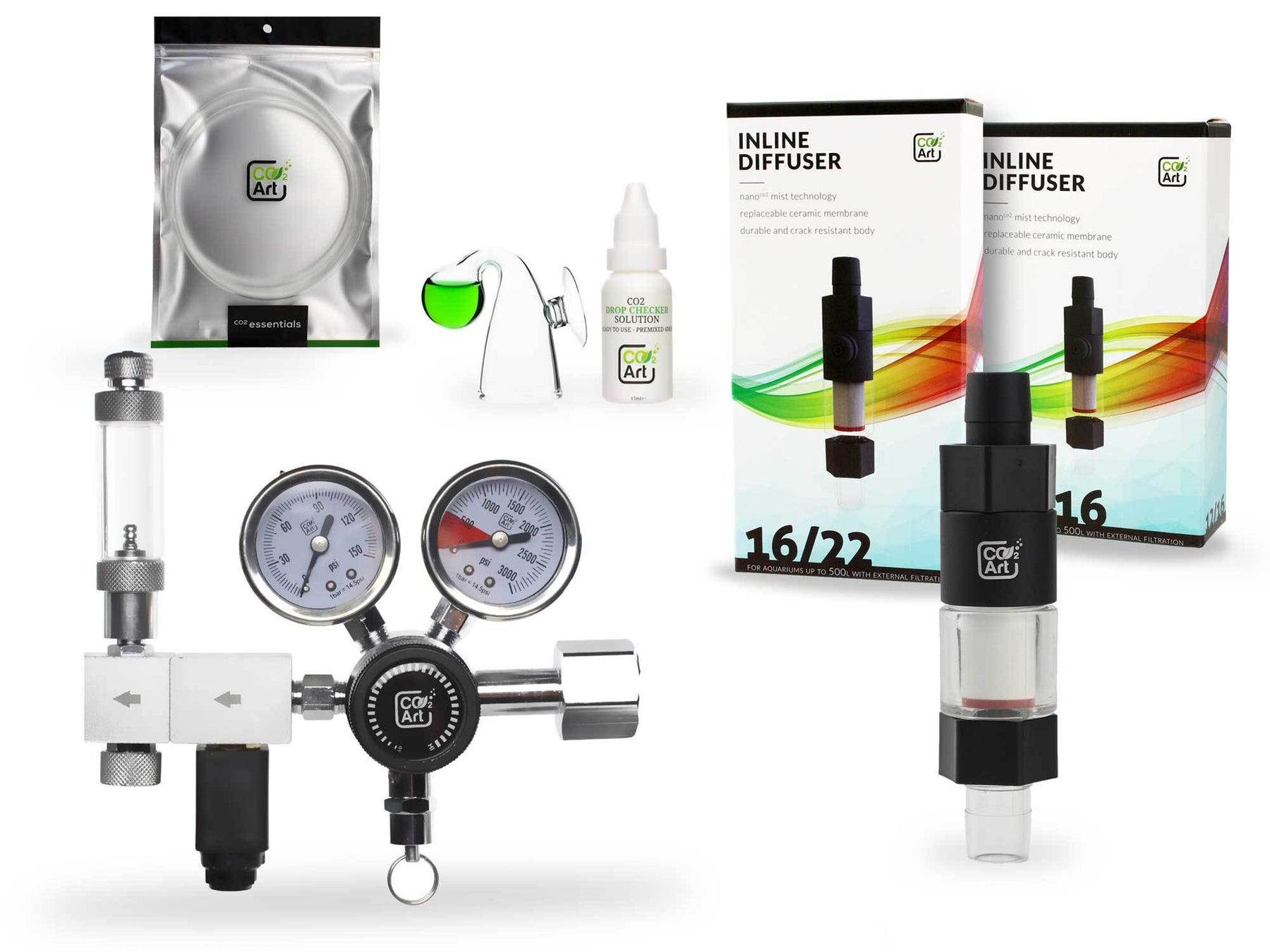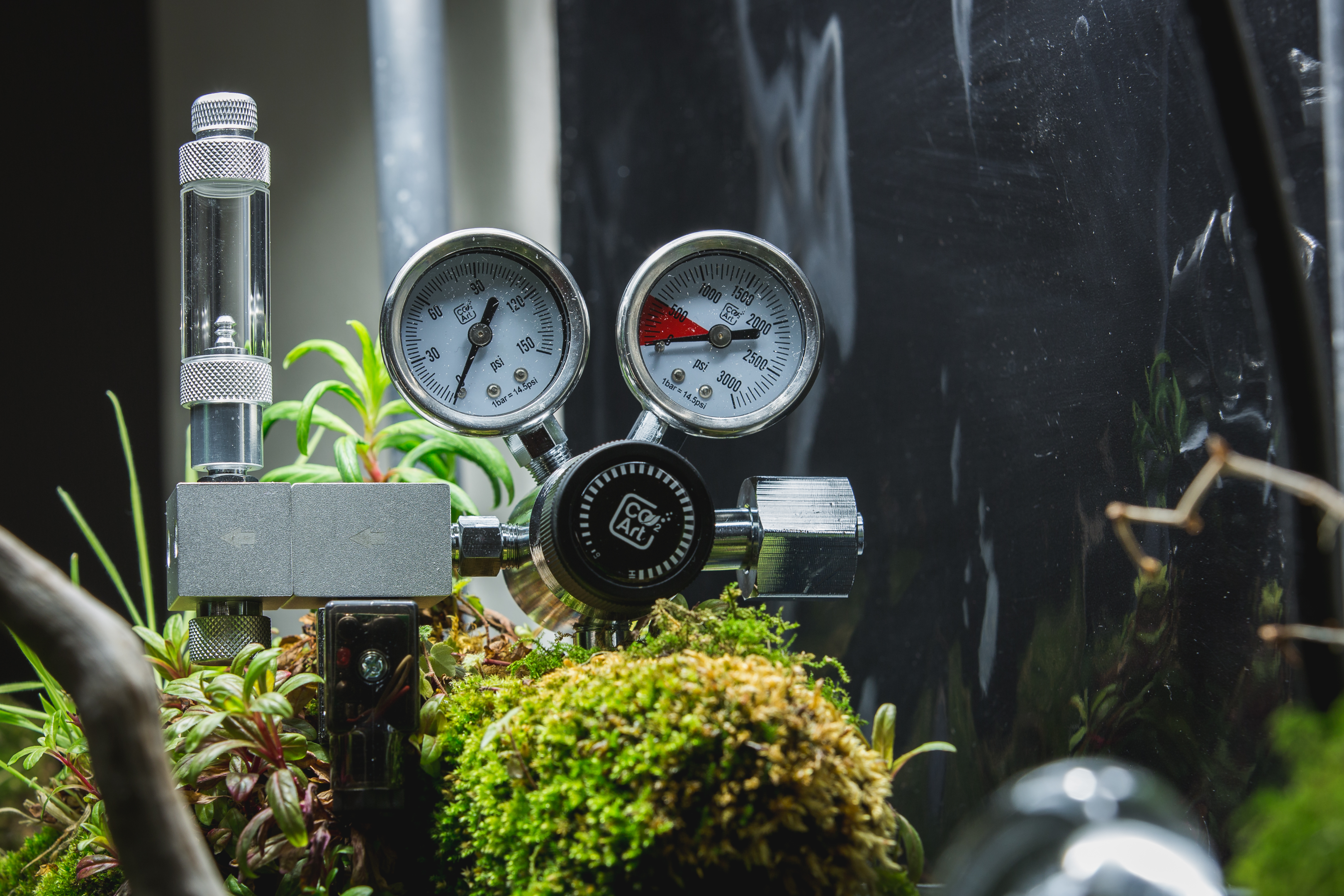How to add CO2 safely to your planted aquarium
Adding carbon dioxide (CO2) to a planted aquarium is a pivotal step in maintaining a vibrant and healthy aquatic environment. The process, often referred to as how to add CO2 to your aquarium, enhances the growth and vitality of aquatic plants by providing them with a critical component for photosynthesis. This article will guide you through the safe and effective methods of CO2 supplementation, ensuring your aquatic plants flourish.
Incorporating CO2 into an aquarium can transform a dull, stagnant display into a lush, thriving underwater garden. The ability to effectively add CO2 to aquarium settings is not just about boosting plant growth; it also helps in maintaining the overall balance of the aquatic ecosystem, promoting better water quality and healthier fish.
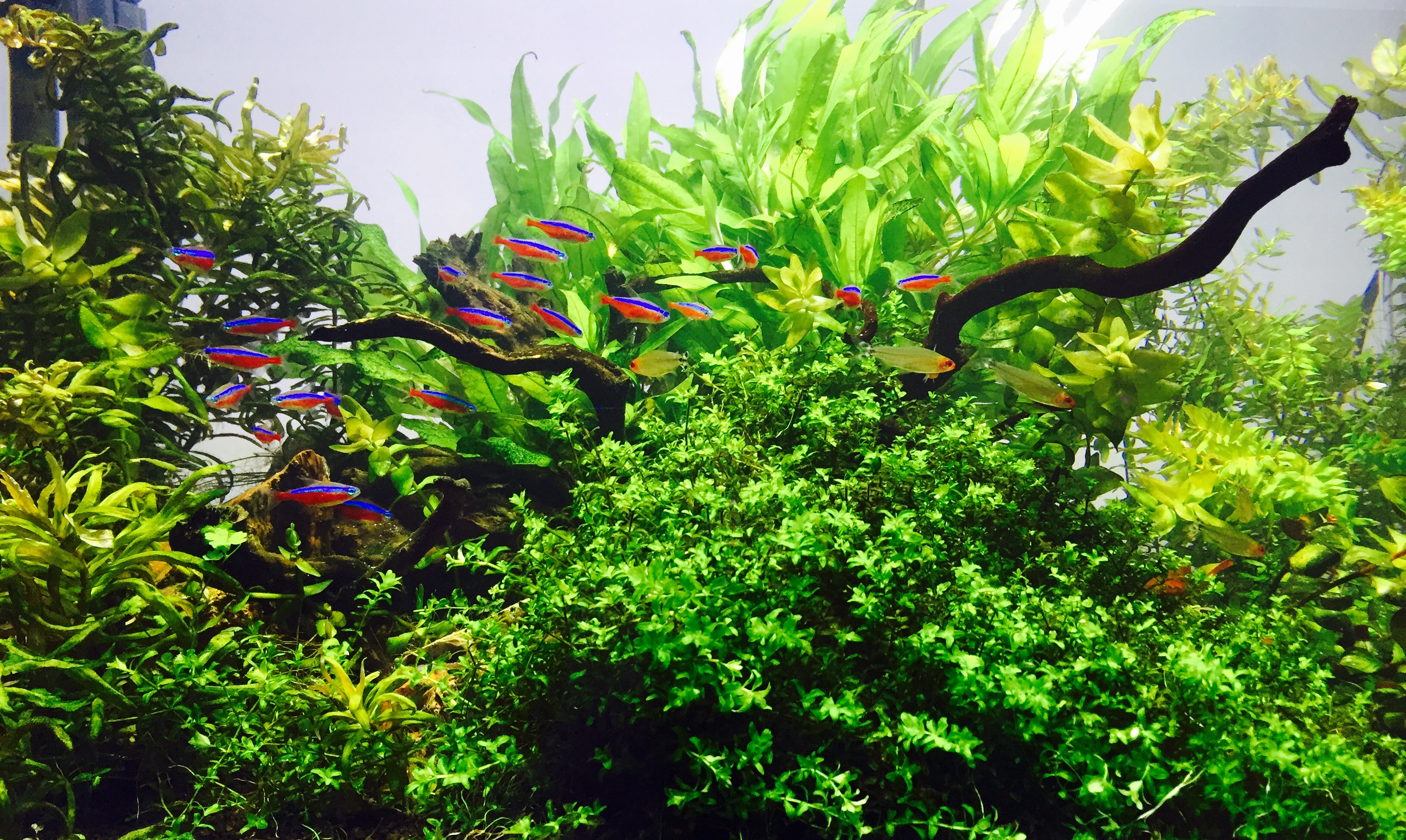
Understanding CO2 in Aquatic Environments
Carbon dioxide is more than just a gas dissolved in water; it is a vital source of carbon for aquatic plants, essential for their growth and development. Understanding how to increase CO2 in aquarium setups involves recognizing the natural cycle of CO2 in an aquatic environment. During the day, plants absorb CO2 for photosynthesis, releasing oxygen for your aquatic animals.
At night, the process reverses, with plants consuming oxygen and releasing CO2. Managing these levels is crucial to prevent CO2 depletion during the day, which can stunt plant growth and disrupt the balance of your tank. Supplementing CO2 ensures that plants have enough carbon dioxide to thrive without depleting the oxygen levels needed by the fish.
The Science Behind CO2 Supplementation
Supplementing CO2 in a planted tank boosts the photosynthetic process, enabling plants to grow more vigorously and absorb nutrients more effectively. This is the easiest way to add CO2 to aquarium environments, ensuring that plants have the resources they need to develop strong root systems, thicker leaves, and vibrant colors. Enhanced plant growth also helps in controlling algae, as healthy plants compete more effectively for nutrients.
The relationship between light, CO2, and nutrient availability forms the cornerstone of a successful planted aquarium. By increasing CO2 levels, you enhance the ability of plants to utilize the light and nutrients available in the water, leading to a more balanced and aesthetically pleasing aquarium. Understanding these dynamics is key to creating an environment where both plants and fish can prosper.
Signs Your Aquarium Needs CO2
If you notice that your aquatic plants are growing slowly or their leaves are turning yellow and dropping off, it might be a sign of CO2 deficiency. Learning how to add CO2 to water effectively can mitigate these issues, encouraging robust plant growth and preventing the conditions that favor algae overgrowth. These symptoms often indicate that your plants are not photosynthesizing at an optimal level due to insufficient CO2.
Another sign to watch for is poor plant coloration. Plants that lack enough CO2 often exhibit less vibrant colors. Additionally, if you observe excessive algae growth, it could be due to the plants not consuming enough nutrients from the water, a situation often remedied by proper CO2 supplementation. Managing CO2 levels effectively helps ensure that your plants are healthy, your fish are happy, and your tank is a dynamic and visually appealing ecosystem.
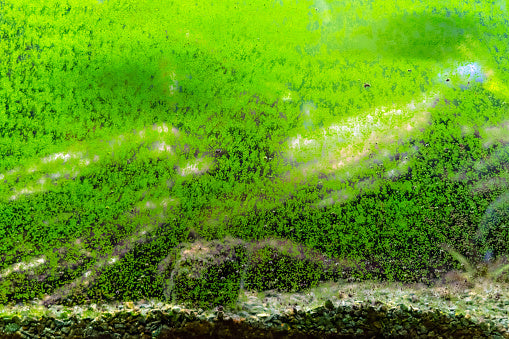
Types of CO2 Injection Systems
When considering CO2 injections for your aquarium plants, there are mainly two types: DIY setups and pressurised CO2 systems. DIY setups are cost-effective and suitable for smaller tanks or beginners. However, for a more controlled and consistent CO2 injection, a pressurized CO2 system is recommended. This system uses a CO2 tank, a regulator with a pressure gauge, and often includes a solenoid valve to control the flow automatically according to the lighting cycle, thereby optimizing gas exchange in the aquarium water.
Pressurised CO2 systems are especially beneficial in tanks with high lighting and high tech plants that demand more CO2 for optimal growth. The setup usually includes a bubble counter to help monitor the amount of CO2 being dispensed. The bubble counter is a critical component as it allows for precise adjustments and ensures that the CO2 levels in the aquarium are maintained within a safe range for both plants and fish. This method is regarded as the most effective way to add CO2 in your aquarium, especially in setups that require high levels of CO2 to support lush plant growth.
Essential Equipment for Your CO2 System
The fundamental components required for a functioning CO2 system in an aquarium include a CO2 tank, a regulator, a needle valve, a bubble counter, a drop checker, and a diffuser. Each piece plays a crucial role in delivering and regulating CO2 effectively. The needle valve is particularly critical as it allows for precise control over the flow of CO2, ensuring that the CO2 is delivered in a consistent, controlled manner. The bubble counter is a simple yet essential device that allows aquarists to visually monitor the rate at which CO2 is injected into the tank, providing a direct measure to ensure consistency and precision in CO2 delivery.
The diffuser plays a key role in dispersing CO2 throughout the aquarium. It breaks down the CO2 into tiny bubbles, often described as misty bubbles, which increase the surface area of the gas and enhance its dissolution into the aquarium water. This process ensures more efficient utilization of CO2 by the aquarium plants and promotes optimal gas exchange within the tank environment.
Additionally, a drop checker is an indispensable tool in any CO2 injection setup. It provides a visual indication of the CO2 levels within the tank, changing color to reflect the current concentration. This specialized kit measures the pH and KH of the water and uses a color-changing solution to indicate whether the levels of CO2 are too low, optimal, or too high. Integrating a solenoid valve further automates the CO2 supply, aligning it with the lighting schedule to optimize uptake and minimize waste. Together, these components form a comprehensive CO2 system that supports vibrant plant growth and stable water conditions in your planted aquarium.
Choosing the Right CO2 System for Your Aquarium
Selecting the right CO2 system for your aquarium depends on several factors including tank size, the type of aquarium plants you have, and your experience level. For tanks with high tech plants and high lighting, a pressurized CO2 setup is typically necessary. This setup provides a consistent and adjustable flow of CO2 injections, critical for maintaining the health and growth of demanding plant species. Using a bubble counter and pressure gaugehelps in fine-tuning the system to deliver just the right amount of CO2, ensuring optimal plant growth without compromising the safety of the aquatic life.
The choice of a CO2 system might also be influenced by the desire for automation. A system equipped with a solenoid valve and a needle valve provides more control over CO2 delivery, especially useful for aquarists who cannot manually adjust the CO2 supply throughout the day. Additionally, the type of regulator, whether it includes a built-in bubble counter or drop checker, can offer further convenience and precision. Ensuring that your system matches the needs of your setup not only promotes better plant growth but also simplifies maintenance.
Setting the Correct CO2 Levels
Achieving the correct CO2 levels in your aquarium is crucial for the health of both your aquarium plants and aquatic animals. To accurately monitor and adjust these levels, using a drop checker is highly recommended. This device offers a visual representation of the CO2 concentration within the tank. When CO2 injections are properly calibrated, the drop checker will show a green color, indicating optimal CO2 saturation. If the color shifts towards blue, it means the CO2 levels are too low, while yellow signals excessive CO2, which can be harmful to fish.
Adjusting the CO2 levels involves fine-tuning the needle valve to alter the flow rate of CO2 entering the aquarium. The bubble counter is instrumental here, as it allows you to visually confirm the rate of CO2 injections. This setup is particularly important in aquariums with high lighting, as higher light levels can increase the demand for CO2 among high tech plants. Regularly checking and adjusting your CO2 system ensures that your plants have enough CO2 for photosynthesis without reaching levels that could endanger your fish.
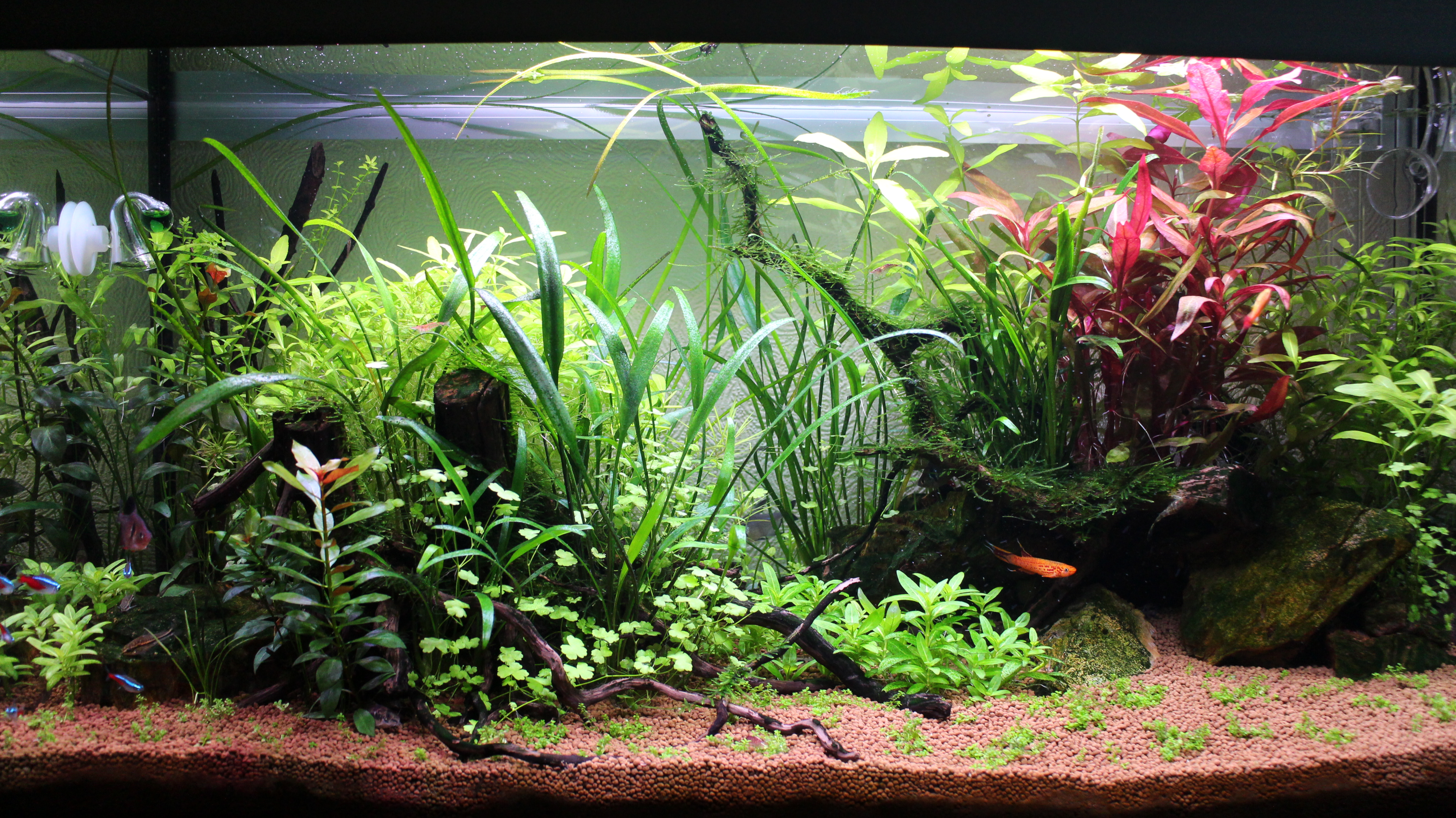
Adjusting CO2 Supply
As your aquarium evolves, so too will the needs of your aquarium plants for CO2. It's vital to regularly adjust your CO2 injections to match the growth stages of your plants. As plants mature and increase in density, they will require more CO2 to maintain healthy growth. Utilizing the bubble counter to adjust the CO2 injections allows for precise control over the amount of CO2 delivered to the water, which can be crucial when balancing plant needs with fish health.
Moreover, the responsiveness of your system can be enhanced with a solenoid valve, which can be timed to the lighting schedule of your aquarium. This synchronization ensures that CO2 injections are only active when the lights are on and photosynthesis is occurring, preventing CO2 waste and potential overnight drops in oxygen levels, which are critical for the safety of the fish. Adjusting the CO2 supply efficiently helps maintain a stable environment that supports both vibrant plant growth and healthy aquatic life.
Maintaining Your CO2 System
Regular maintenance of your CO2 system is essential to ensure its longevity and efficiency. This includes periodic checks of all components like the bubble counter, needle valve, and pressure gauge.
Additionally, the tubing that connects the components should be inspected for any cracks or kinks that could impede the flow of CO2. Replacing old or worn-out parts before they fail is key to avoiding disruptions in your CO2 supply. Cleaning the diffuser to prevent clogs from interfering with the dispersion of misty bubbles will also help maintain efficient gas exchange and uptake by the plants. Scheduled maintenance not only extends the life of the equipment but also ensures that your aquarium plants receive a consistent and adequate supply of CO2, contributing to a stable and thriving aquatic environment.
CO2 and Fish: Ensuring Safety
While CO2 injections are vital for the health of aquarium plants, it's equally important to ensure the safety of the fish and other aquatic animals in your tank. CO2 levels that are too high can lead to decreased oxygen levels in the water, posing a risk to fish health. To safeguard against this, closely monitor the CO2 levels using a drop checker. A drop checker provides a visual indication of the CO2 concentration, helping maintain it within a safe range for all inhabitants. Additionally, incorporating a solenoid valve allows for automatic control of the CO2 supply, turning it off at night when plants do not photosynthesize, which helps prevent CO2 buildup and maintains oxygen levels.
It's also crucial to observe your fish for signs of distress, which could indicate imbalances in CO2 levels. Symptoms such as gasping at the surface or lethargy are immediate red flags. In such cases, it's necessary to adjust the CO2 injections downward and increase aeration to boost oxygen levels in the aquarium water. Regularly testing water parameters with a focus on pH and CO2 can prevent these issues and ensure a harmonious environment where both plants and fish can thrive.
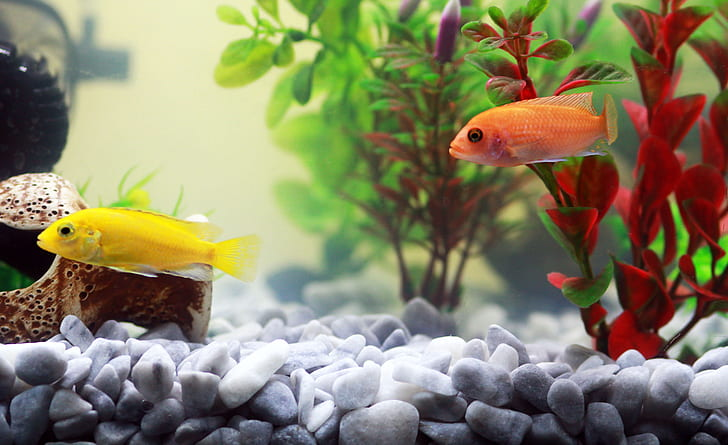
Alternatives to CO2 Injection
For aquarists seeking to enhance the growth of aquarium plants without the complexity of a CO2 system, there are natural alternatives to consider. One method involves optimizing organic decomposition within the substrate, which naturally produces CO2 and can be sufficient for tanks with low to moderate light and less demanding plant species. This approach reduces the reliance on mechanical CO2 injections while still supporting plant growth through natural gas exchange processes.
Another alternative is to select aquarium plants that do not require high CO2 levels for healthy growth. Plants like Anubias, Java fern, and mosses thrive in lower CO2 conditions and are excellent choices for beginners or those preferring a less technical setup. These plants are well-suited to high lighting conditions without the need for supplemental CO2, offering a simpler and often more cost-effective approach to creating a lush, planted aquarium.
Conclusion
Understanding how to add CO2 to your planted aquarium is a crucial skill that can dramatically impact the health and aesthetics of your aquatic environment. Whether you choose to implement a CO2 system using pressurized CO2, CO2 injections, or opt for natural methods of CO2 supplementation, the key is to maintain balance. Properly managed CO2 levels foster robust plant growth, inhibit algae, and contribute to a vibrant ecosystem. As you become more familiar with the dynamics of CO2 supplementation, you will be better equipped to adjust your approach based on the specific needs of your aquarium plants and the life within your tank.
Embarking on the journey of CO2 supplementation in your aquarium is an engaging and rewarding process. It offers an opportunity to deepen your understanding of aquatic life and enhance the beauty of your setup. With careful monitoring, regular maintenance, and a willingness to adapt, you can create a thriving aquatic world that captivates and delights all who view it. Remember, the success of your aquarium depends on the harmony between all elements—plants, animals, and environmental conditions. Continue to learn, observe, and adjust, and your aquarium will flourish.
Meet our bestseller! The Pro-Elite Series Complete Aquarium CO2 System with New Inline CO2 Diffuser!
